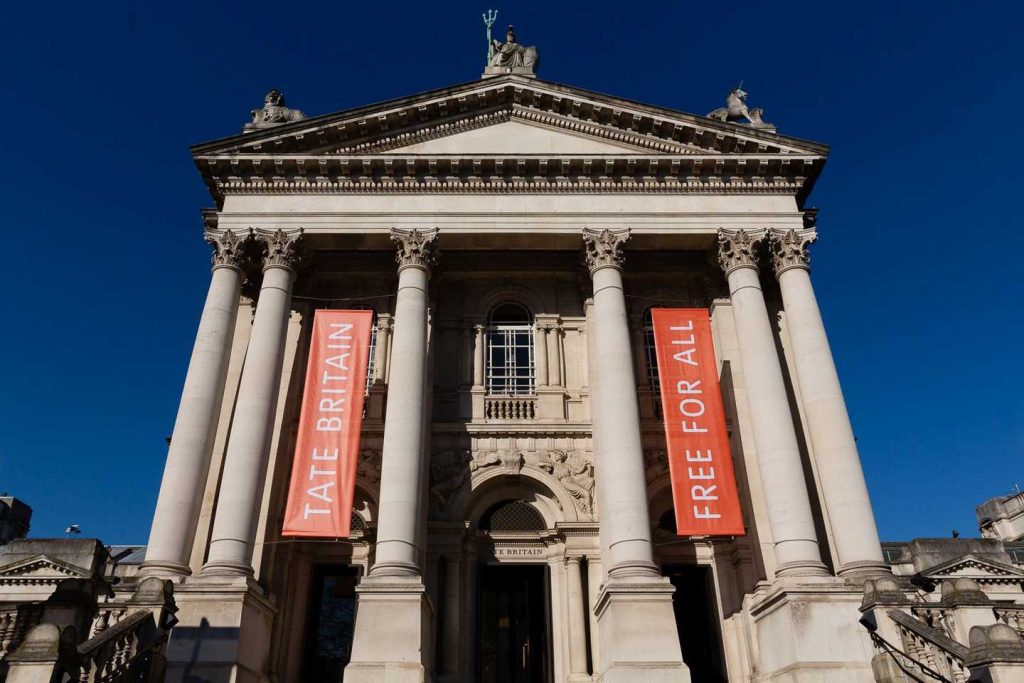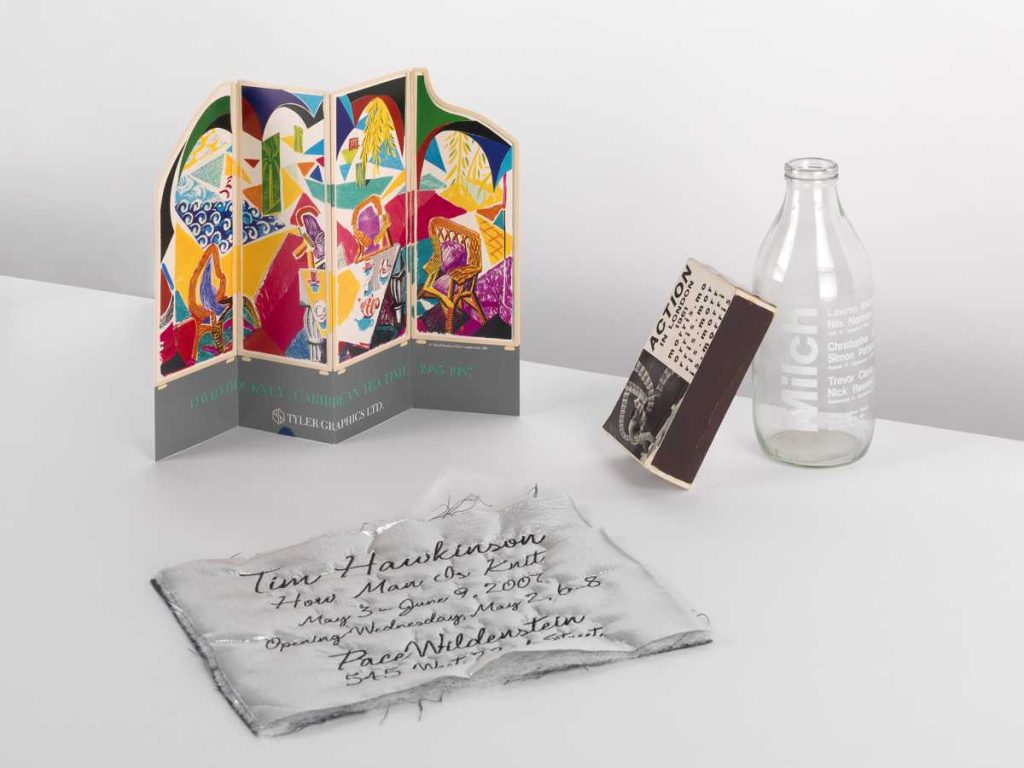Library of the Week: 12th December : A very exciting post this week for our last featured library of 2022 – the amazing Tate Library! Find out more in this brilliant new post by Gustavo Grandal Montero, Library Collections and Engagement Manager – thank you for taking part.
Founded in 1897, Tate holds the United Kingdom’s national collection of British art, and international modern and contemporary art, in a network of four art galleries: Tate Britain, Tate Liverpool, Tate Modern and Tate St Ives. It collects British art from circa 1500 and international art from circa 1900 to the present, and seeks to represent significant developments in art in all areas covered by this remit. Tate’s mission is to increase the public’s knowledge, understanding and enjoyment of British art from the sixteenth century to the present day and of modern and contemporary art.
Growing in tandem with the art collection, Tate’s Library and Archive has become a national collection in its own right, a centre of excellence for art historical research as well as an essential tool for understanding Tate’s collection. Tate Library collects published material relating to British art and artists from 1500, and international art and artists from 1900, and contains over c. 500,000 items, including 115,000 monographs, 175,000 exhibition catalogues, 10,000 artists’ books and zines, 3,000 print journals, audio and video recordings, press cuttings and printed ephemera, in addition to a wide range of online resources. Tate Archive collections contain over a million items related to British artists and art organisations, while Public Records document the full range of Tate’s activities, with thousands of records from 1897 onwards.

Library collections
Tate Library has a renowned collection of exhibition and collection catalogues, from early Royal Academy exhibitions to the latest shows. The collection is particularly strong on modern and contemporary art. It includes catalogues of artists’ exhibitions, group shows, permanent and private collections, and catalogues raisonnés. Many rare items are included in the collection, documenting the development of an exhibition culture in the UK and abroad. The collection is an essential resource for research on artists, in particular the early careers of British and international artists. The printed ephemera collection includes private view invitations, listings, artists’ CVs, flyers, posters and other material documenting exhibitions and art practices from the post-war period onward.
The Library holds a comprehensive range of art monographs including books on artists, and titles relating to aesthetics, art theory, art history, artistic practice, museology, and critical and cultural theory. The journal collection consists of art magazines, academic journals, newsletters, bulletins, and other serials on British and international art, conservation, museology, curatorship, and art education.

Tate Library’s Special Collections comprise artists’ publications, rare books and catalogues and historical collections of international significance. It holds a collection of approximately 10,000 artists’ books dating from the 1960s onwards. These materials are international in scope and although it historically placed an emphasis on British, European and North American artists, it has expanded to include artists’ books from a broad range of geographic regions, specifically Latin America, Asia, and Africa. The collection is formed around a broad definition: a book (i.e. normally a number of pages attached to each other in some way) wholly, or primarily conceived by (though not necessarily actually made/printed by) an artist as part of their practice, and usually produced in a cheap, multiple edition for wide dissemination. The books range in format and structure, and include flip books, concertina books and books made from materials other than paper, such as brick, vinyl, or fabric. From 2014, the Library’s collection of zines explores self-publishing in relation to art. It includes many different types of zines which are visual by nature such as perzines, art zines, photo zines, and fanzines which feature collage, illustration, and photography. The Library also holds approximately 250 individual artists’ serial titles.
Panchayat was founded in London in 1988 by Shaheen Merali and Allan de Souza, in consultation with Bhajan Hunjan, Symrath Patti and Shanti Thomas, as a response to the need for the representation of global majority artists. Panchayat was first imagined by the group as an arts organisation whose focus was to create an archive of work by contemporary artists who would produce issue-based work, with a particular focus on cultural identity and the intersection between race, class, gender, policed sexualities, and disability. The Panchayat Collection consists of ephemera, information files, exhibition catalogues, books, journals, slides and videos relating to cultural activities and activism in Britain, mainland Europe, North America and South East Asia between the 1980s and 2003. The Panchayat Collection is of central importance to the practice and exhibition histories of artists with South Asian, Caribbean, and African heritage, living and working in Britain during this period. In 2015, Shaheen Merali and Dr. Janice Cheddie, keepers of the Panchayat Collection, agreed to the transfer of the material to Tate Library as a Special Collection. Since then, it has attracted newer audiences and a wide range of researchers exploring topics including diasporic connections and the role of women of colour in the visual arts. The Panchayat Collection was the focus of a case study for the Provisional Semantics research project in 2020–2022, and it is currently in the process of being partially digitised as part of a Library digitisation pilot project, building on the successful Archives & Access project.
The Martin Parr Photobook Collection, acquired by Tate in 2017, consists of over 12,000 titles, including many of the most iconic volumes in the history of photography, as well as unparalleled holdings of work by amateur and anonymous photographers. Collection highlights include rare photobooks from Japan, China, Europe, Latin America, the United States of America and the United Kingdom.
The David King Collection spans the period in Soviet history from the revolutions of 1905 and 1917 to the death of Joseph Stalin in 1953. It was assembled over four decades by the collector and was acquired by Tate in 2016. It holds ca. 2,400 volumes of rare books, 500 serials, and pamphlets.

Hyman Kreitman Reading Rooms and public programme
The Hyman Kreitman Reading Rooms at Tate Britain are a dedicated space for research providing access to Tate Library and Archive collections and Tate Public Records. Our Reading Rooms are free and open to all. You can book an appointment Monday to Thursday 11.00-15.00 by email: reading.rooms@tate.org.uk Additional visiting information is available on our website. The Library collection is a reference collection and items cannot be borrowed, with some exceptions (Tate staff, SCONUL Access).
Tate Library offers a public Scan and Send service. Readers can request up to 10% or a chapter of up to 3 library items for personal research and private study. We also offer full inter-library loans service to libraries within the UK and Republic of Ireland and photocopy-only service to international libraries.
The Library team can recommend resources, provide assistance on searching the collections, and answer reference questions but in-depth research queries must be carried out by researchers themselves. Tate staff are not able to identify, authenticate, or appraise works of art owned by private individuals. In addition to providing access, the team is also responsible for managing and developing the Library collections, acquiring new material within our scope by purchase as well as donation. It is currently comprised of two Senior Liaison Librarians, two Liaison Librarians, a Serials and Digital Resources Librarian, a Coordinator, an Apprentice, a temporary cataloguer and a Library Collections and Engagement Manager, and we work very closely with other colleagues in the Library and Archive department and the wider Tate.

The Library contributes to Tate’s programme of exhibitions, activities and events. Library material is often shown in the Tate galleries, both as part of exhibitions and collection displays, and can be lent to approved venues for display elsewhere (more information about exhibition loans is available on our website). The exhibition Bill Brandt: Inside the mirror, for instance, includes a large number of photobooks from our collections, alongside photographs and artworks. Library staff also curate displays in the Archive Gallery: Document or Artwork?, our current display, showcases artists’ books from our collection alongside archival material.
The Library team also contribute to the Show and Share programme and support Late at Tate and other events (book launches, talks, etc.) Recent Show and Share events included Folding the Page, an afternoon of talks, discussions and hands-on demonstrations co-organised with Inscription: the Journal of Material Text – Theory, Practice, History and Visions of the Occult, marking the launch of Visions of the Occult: An Untold Story of Art and Magic by archivist Victoria Jenkins.
Gustavo Grandal Montero, Library Collections and Engagement Manager
All images copyright of Tate, reproduced with kind permission of the copyright holder.
You can explore the library’s collections on Discover and find further contact details on their Discover information page.

